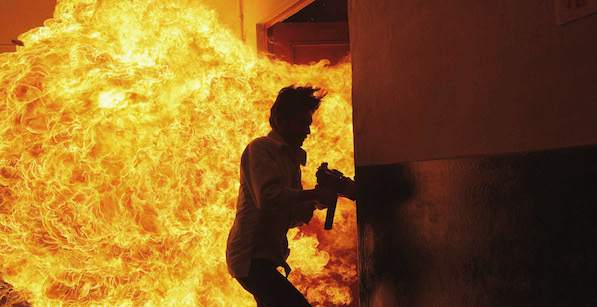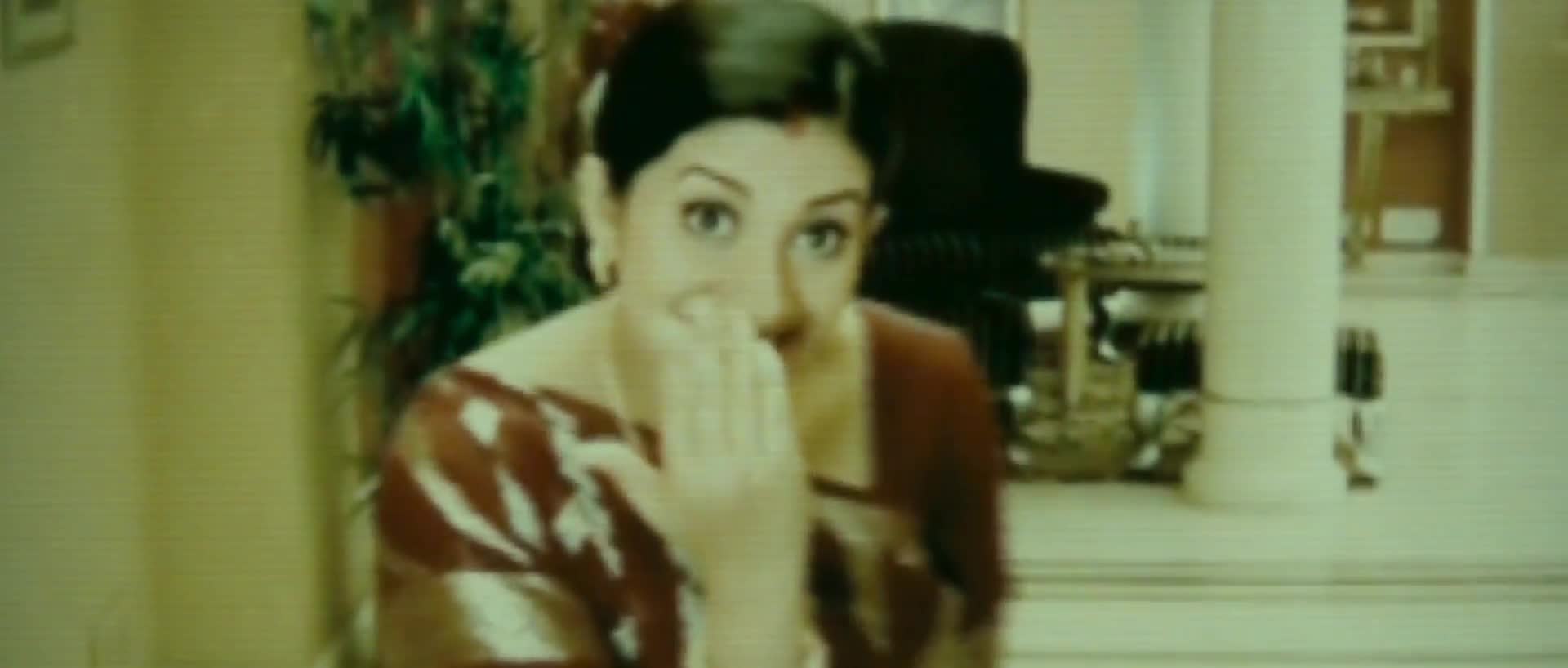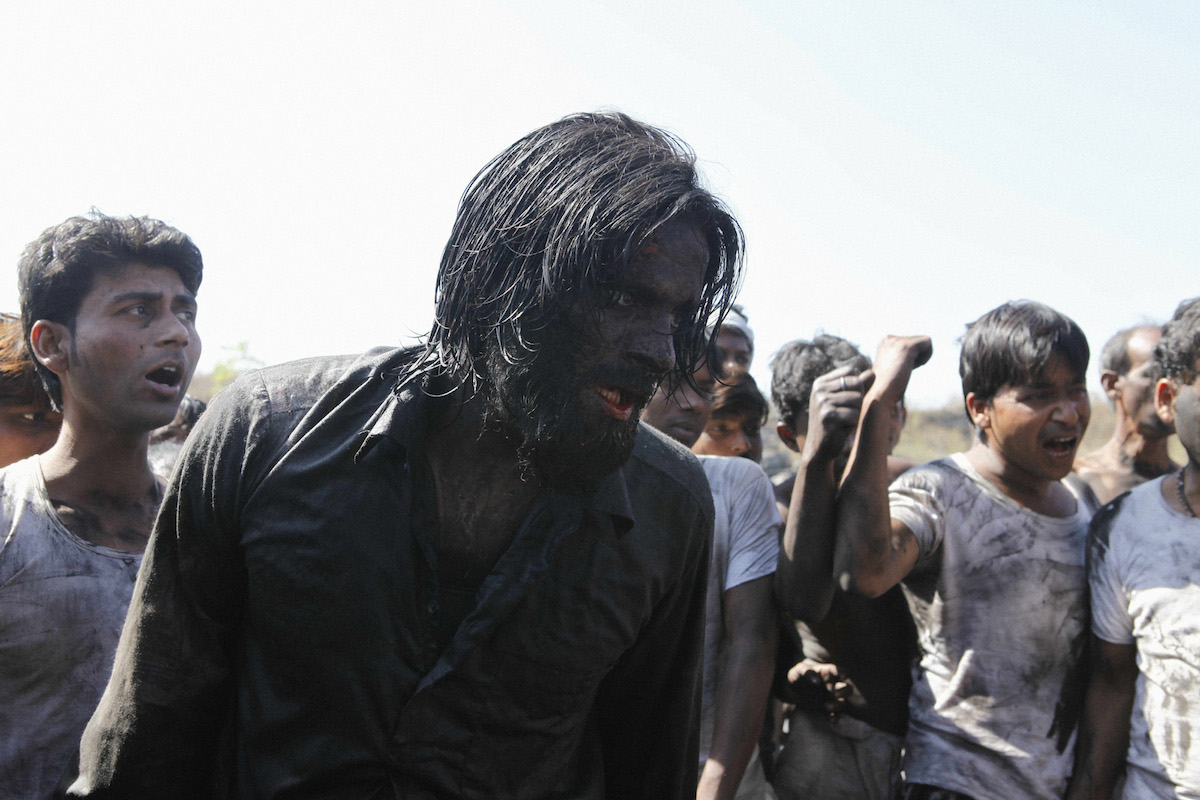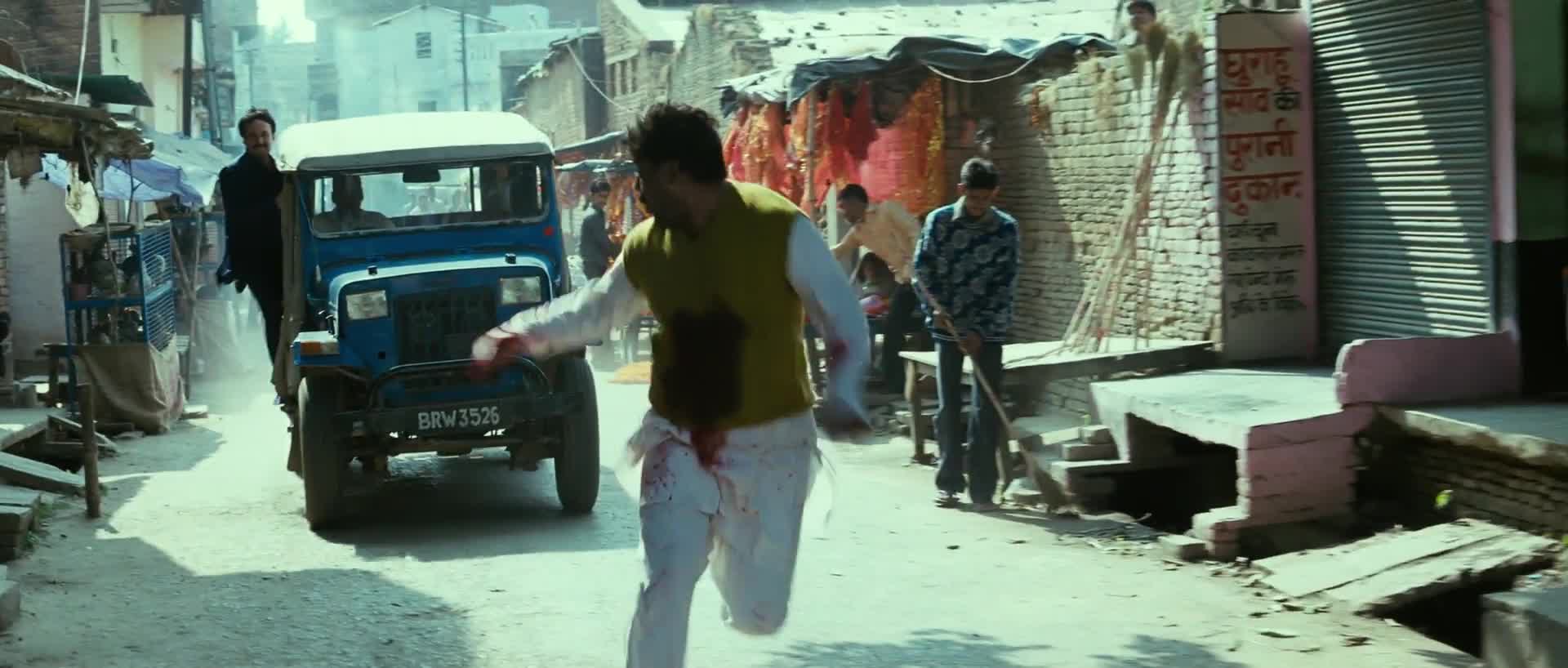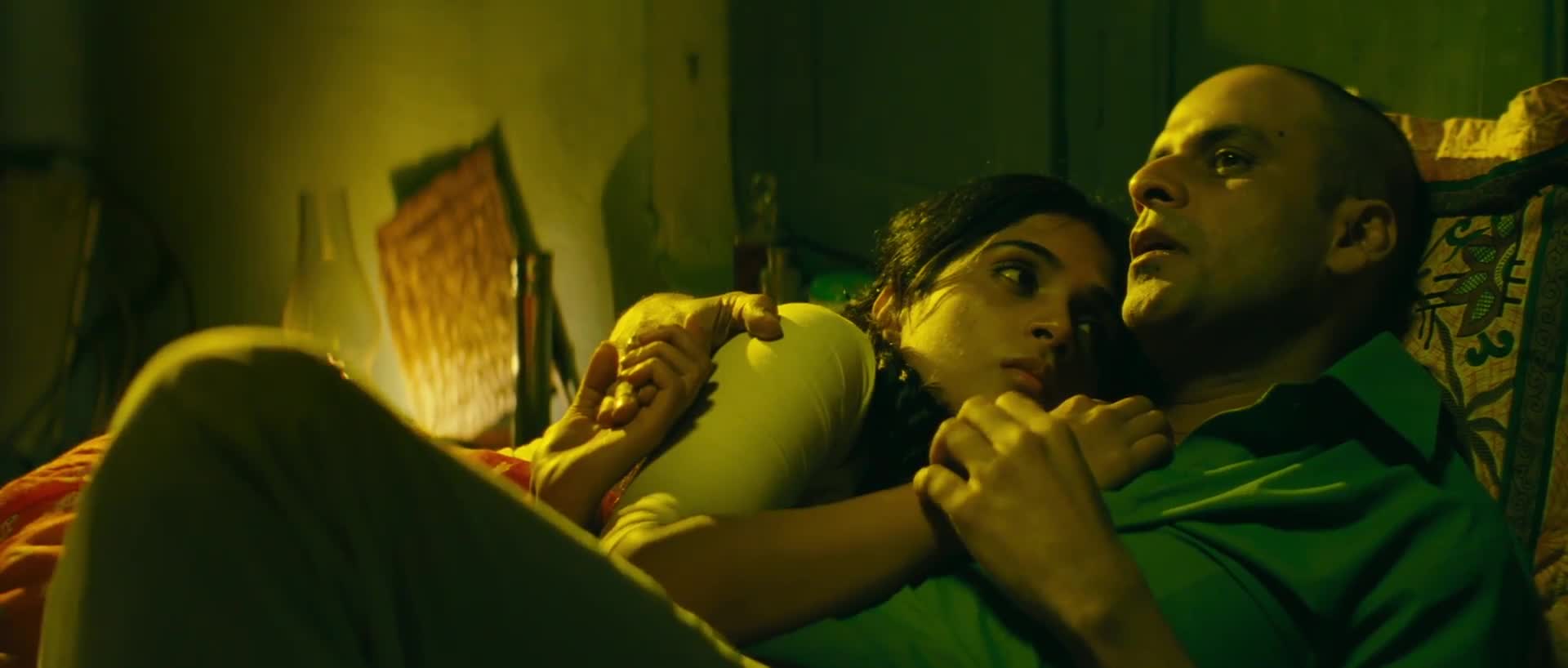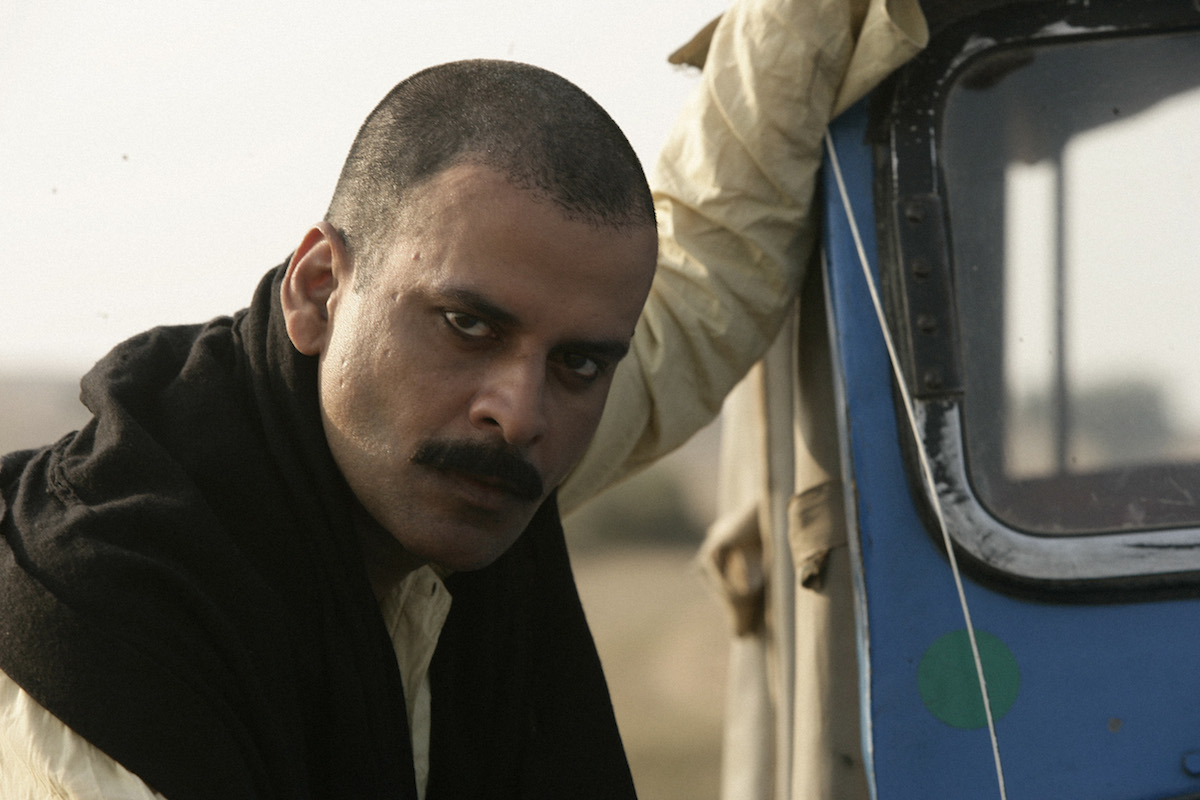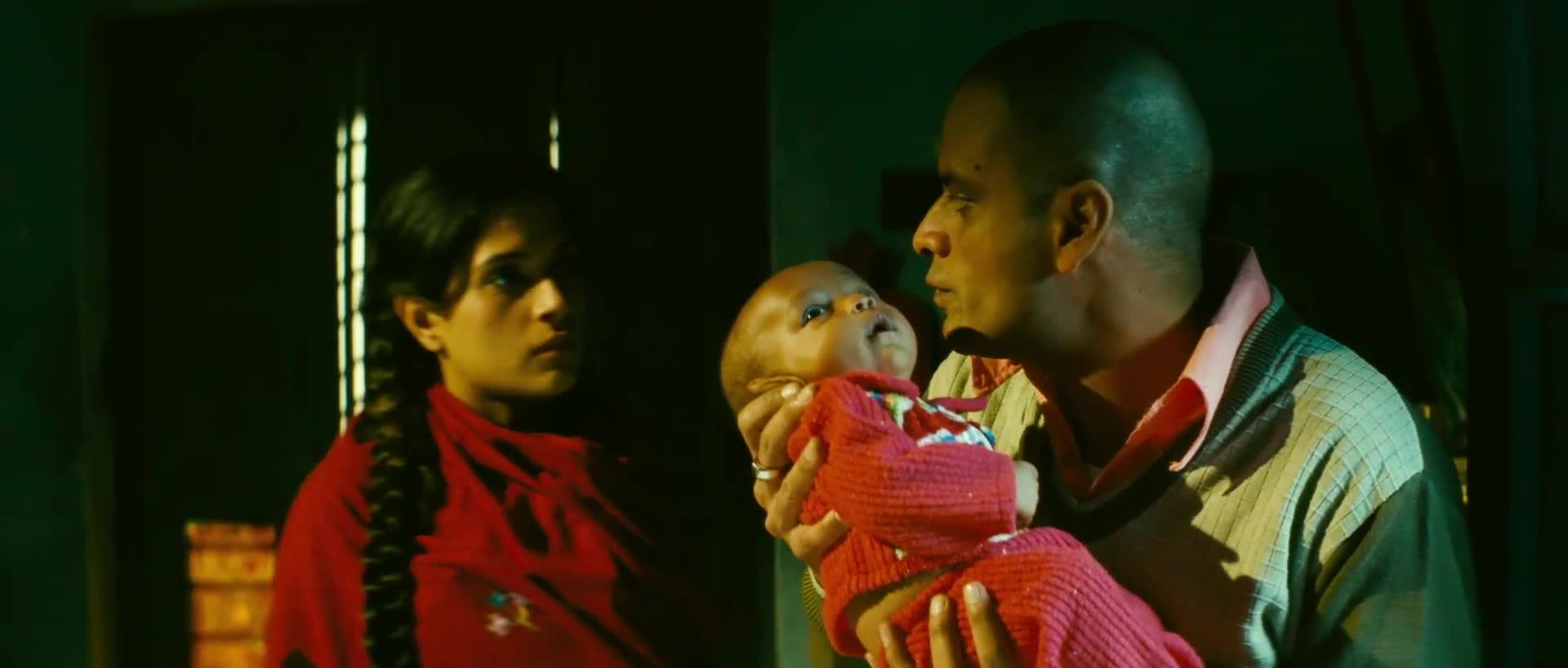[Editor’s note: The following featured review of Indian breakout epic Gangs of Wasseypur contains spoilers. You may want to read only after viewing the film.]
When you start Gangs of Wasseypur, Anurag Kashyap’s critically lauded, fan-approved five-hour-long crime saga set in the Indian state of Bihar, the cheesy title track to an iconic Indian soap opera is not what you expect. Yet, just as you’re getting over shocked laughter, the television set is shattered by a bullet and there’s gunfire all over. A gang of goons is moving around an anonymous village and hunting for someone. You don’t get any exposition till after the credits, but Gangs of Wasseypur plunges you into the bloody action from its first minute and—for most of its runtime—doesn’t let up.
Based on the true story of the coal mafia in Dhanbad, a lawless town, Kashyap’s magnum opus revolves around three families and their intergenerational rivalry. Through these warring clans, it also narrates the story of what occurred in Indian society around them after Independence—no mean feat. Screened as one bladder-bursting epic at the 2012 Cannes Film Festival, where it premiered in Director’s Fortnight, Wasseypur was split into two parts for its Indian theatrical release. The first part starts in 1941 and treks through to the nineties, ending at an amazing cliffhanger: the kind of thrilling, rousing climax that makes you wish you were in a packed hall. Don’t wait more than a day to watch the second part.
Kashyap’s cinematic style has often been noted for its similarity to Quentin Tarantino’s, and Wasseypur—with its extreme violence, oscillating tones, aggressive music—is a strong argument for the same. There are also traces of Sergio Leone everywhere; a title like “Once Upon a Time in Bihar” wouldn’t be misplaced. The film may not connect its narrative convincingly with historical or social commentary (a narrator tells you when important events like the Emergency occur, but those mentions affect the plot so little they could be easily excised from the first 160 minutes), but there is reasoning in the film’s runtime.
Wasseypur is this long is because Kashyap doesn’t use the revenge drama at the center as a singleminded thrust as much as a node, around which interesting things keep happening—all of which he wants to follow. This may have led to a flabby whole, but the individual parts comprising it are delicious. The auteur is in top form on numerous sequences; his skill in crafting tension, injecting suspense into already fraught situations, finding humor in the bleakest moment and fashioning cinematic engagement is powerful. Given how constantly violent Wasseypur is, just how funny it manages to be simultaneously cements Kashyap’s artistic acumen.
Watch out for the scene where a forgotten umbrella reveals its owner’s nefarious intentions to the other person. Several other moments in the film are as tense. Notice how the goons, as bloodthirsty and unflinching as they are, reveal their clumsiness the first time they’re robbing someone or using guns. Wasseypur doesn’t sugarcoat its characters—many of whom are scoundrels—or their talents. And observe the eroticism oozing off the screen during a courting scene involving, of all things, the act of washing clothes. Almost every time hormones guide characters’ actions—which is often—hilarity ensures.
This part’s success is largely due to three performances, by: Tigmanshu Dhulia, Richa Chaddha and Manoj Bajpai. Dhulia plays the antagonist, and while he’s scary enough what makes him stand out is his deadpan sense of humor. Watching him dress his henchmen down is a never-ending delight. Chaddha plays the protagonist’s wife, and the way she terrorizes him in the household despite his reign outside is wonderful. She is a motormouth, and her no-nonsense street slang makes her more endearing. Bajpai plays the protagonist himself, and suffuses proceedings with enough warmth—even when his character is at his worst—that it’s easy to root for him. Bajpai honestly slays the role.
The dialogue in Wasseypur is a joy unto itself. The coarseness of the ruffians’ speech is conveyed so richly it acquires a beauty of its own. The subtitles are adequate, but they can’t do justice to the poetry of the lines in their original dialects. Same goes for the lyrics by Piyush Mishra and Varun Grover that, in partnership with Sneha Khanwalkar’s peppy music, are responsible for Wasseypur’s most resounding successes.
I shall talk more about the overarching themes in the saga in my essay on the second part—for that’s when they become fully realized—but even the first half depicts adeptly how power leads to arrogance, which leads to complacency. I also like how, like any story of enmity spanning generations, love complicates allegiances and how both camps suffer from weaknesses in their most basic relationships: the father-son bond.
The motifs in Gangs of Wasseypur are thought out and strong, yes, but what should get you interested is how much of a rollicking ride this epic is. Come for the revenge, stay for the tangents.

